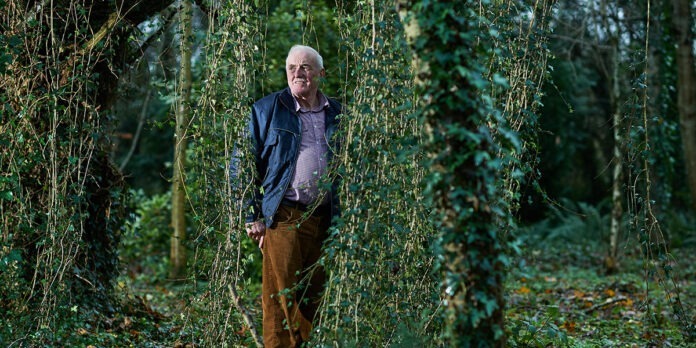THE UPGRADING of an East Clare route into a new greenway could become a major tourist attraction, according to a local historian. Ger Madden believes there are few roads in the Sliabh Aughties as worthy of being kept in repair as the old road from Mountshannon to Flagmount linking Lough Derg and Lough Graney, which was built in 1841.
Unfortunately, it is probably one of the worst roads in the country.
Describing this as the “road less travelled” and a real “gem”, Mr Madden believes it should be developed into a greenway at a fraction of the millions of Euro being spent on developing other similar developments in the county.
“It is a vital link if tourism is ever going to be developed in the Sliabh Aughties. It is a mystery in this age of greenways why it is so neglected,” he said.
“This road and an off shoot to Woodford through the nearly deserted village of Derrygoolin has the potential to be one of the foremost tourist routes through the Sliabh Aughties. This road has been and still is of vital importance to turf cutters.”
The importance of a branch road from Botach Cross on this road to Bugler’s Mill at Middleline was the subject of a petition to Clare County Council in September 1938.
Twelve turf cutters were unable to bring home the turf, due to the state of the road, which was badly damaged by floods. After threatening to sue the council, the road was repaired.
The East Clare author recalled most roads between 1823 and 1850 when road labourers were paid eight pennies a day at a time there were 250 pennies in a pound.
Praising the workmanship in old bridges, he recalled there were made to accommodate horse and carts but can still take the weight of heavy goods vehicles today.
The present main road from Mountshannon to Scariff, the R352, is much closer to Lough Derg than other roads. Work commenced on this road in 1829 and was completed in 1826.
The only substantial bridge on the road is over the Bow River in Meenross. It has few architectural features, having been repaired and rebuilt.
In the mid-19th century a line or famine road was constructed from the “gullet” at Moynoe to Cappaghhabaun. It was generally believed that on the completion of these line roads, a future of prosperity awaited those living on the foothills and interior of Sliabh Aughty. Mr Madden stated it is ironic that the various new roads that were made only accommodated those heading for the workhouse in Scariff and embarkation points along Lough Derg for America and Australia.
In most other cases they only facilitated the local landlord, which in this case was Dr Sampson of Moynoe.
The father-of-three said the road network through the Sliabh Aughty mountains is like a spider’s web, some of which is almost impassable.
The Old Road, Top Road, Upper Road, Middleline Road, Sarsfields Road or the L4018 are all the names used to describe what is probably the oldest road in the Sliabh Aughty mountains.
It was the only road from Woodford to Scariff before 1836 and “went over every hill that could be selected”.
It is still recognisable in its entirety though some parts are privatised and other parts are not wide enough to facilitate more than one four-wheeled vehicle. However, it is of major cultural and historical significance as pilgrims to Holy Island have come this way for 1,500 years.
When the new road from Currakyle to Mountshannon was built between 1841 and 1845, the Sampsons built a shooting lodge, accommodation, kennels for dogs and stables overlooking the village of Turkenagh.
“There is one mile in the middle of this route, which is almost impassable because of potholes,” he said.
“However, it is one of the most beautiful roads through the Sliabh Aughty made in 1845 to accommodate the shooting of grouse in the mountain.”
The Sampsons particularly George and the chief tenant Charles Walnutt realised there was serious money to be made from rich men who wished to shoot red grouse on the mountain.
The sporting rights could bring in one half or more of the rental on poor estates.
“Between 20 and 30 years, grouse shooting was a huge tourist attraction in this area. People who were in the landlord class came to shoot grouse in the 1850s, 1860s and 1870s,” said Mr Madden.
“It provided a huge economic boost to the area. There were a large amount of people employed beating the grouse and looking after guests.
“People came from all over England for shooting parties to the area in August and July in particular. No one lived in the locality so the landlord had the whole area to himself. The heather used to be burned in those days but this is now banned.”
The staple food of the red grouse is the common ling and they eat the shoots, flowers and seed heads.
Efforts are currently being made by the National Parks and Wildlife and the Iniscealtra Gun Club to promote sustainable management of the Red Grouse in the area through legal predator control and habitat enhancement.
East Clare correspondent, Dan Danaher is a journalism graduate of Rathmines and UL. He has won numerous awards for special investigations on health, justice, environment, and reports on news, agriculture, disability, mental health and community.


